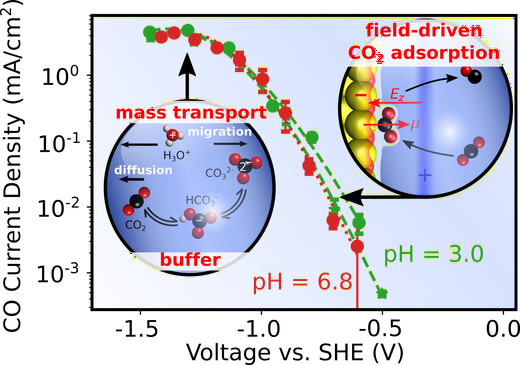Double layer charging driven carbon dioxide adsorption limits the rate of electrochemical carbon dioxide reduction on Gold

Abstract
Electrochemical CO2 reduction is a potential route to the sustainable production of valuable fuels and chemicals. Here, we perform CO2 reduction experiments on Gold at neutral to acidic pH values to elucidate the long-standing controversy surrounding the rate-limiting step. We find the CO production rate to be invariant with pH on a Standard Hydrogen Electrode scale and conclude that it is limited by the CO2 adsorption step. We present a new multi-scale modeling scheme that integrates ab initio reaction kinetics with mass transport simulations, explicitly considering the charged electric double layer. The model reproduces the experimental CO polarization curve and reveals the rate-limiting step to be *COOH to *CO at low overpotentials, CO2 adsorption at intermediate ones, and CO2 mass transport at high overpotentials. Finally, we show the Tafel slope to arise from the electrostatic interaction between the dipole of *CO2 and the interfacial field. This work highlights the importance of surface charging for electrochemical kinetics and mass transport. Electrochemical CO2 reduction is a potential route to the sustainable production of valuable fuels and chemicals. In this joint experimental-theoretical work, the authors address the issue of the rate-limiting step on Gold and present insights from multi-scale simulations into the importance of the electric double layer on reaction kinetics and mass transport.